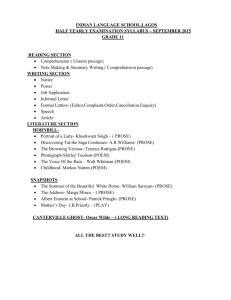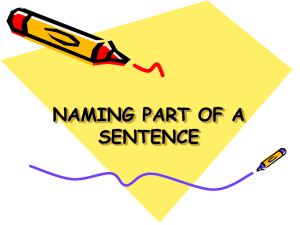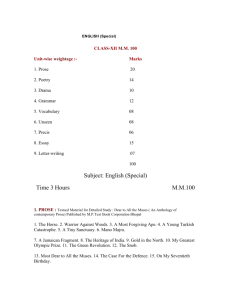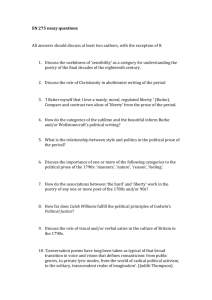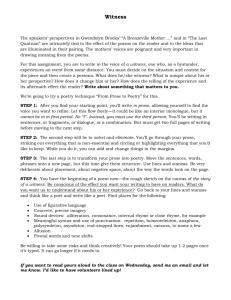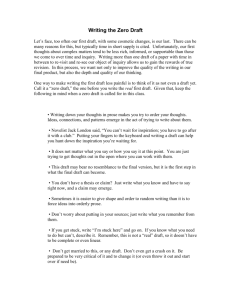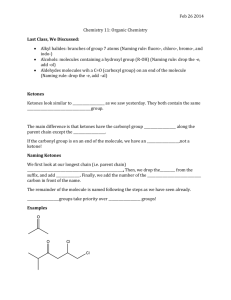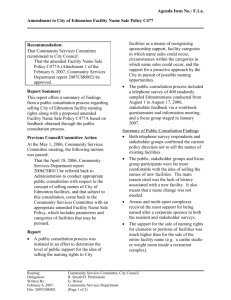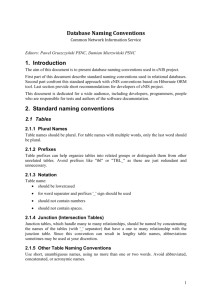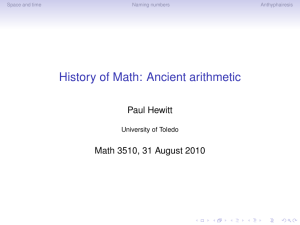LING 131: Authorial & Text Style Analysis
advertisement
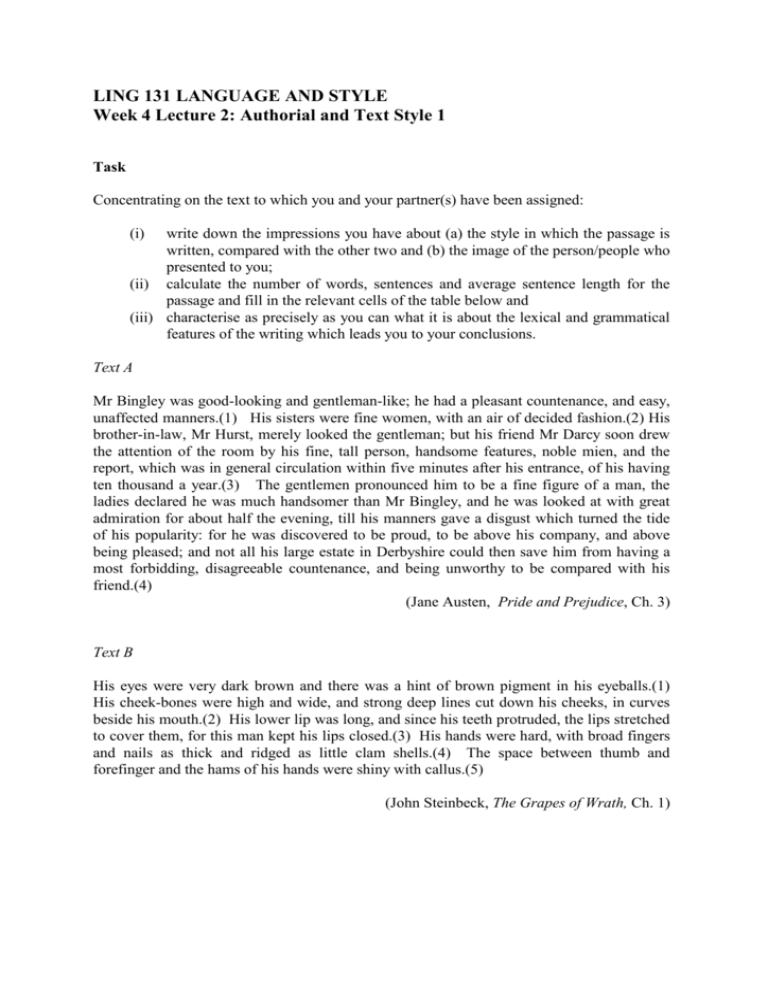
LING 131 LANGUAGE AND STYLE Week 4 Lecture 2: Authorial and Text Style 1 Task Concentrating on the text to which you and your partner(s) have been assigned: (i) write down the impressions you have about (a) the style in which the passage is written, compared with the other two and (b) the image of the person/people who presented to you; (ii) calculate the number of words, sentences and average sentence length for the passage and fill in the relevant cells of the table below and (iii) characterise as precisely as you can what it is about the lexical and grammatical features of the writing which leads you to your conclusions. Text A Mr Bingley was good-looking and gentleman-like; he had a pleasant countenance, and easy, unaffected manners.(1) His sisters were fine women, with an air of decided fashion.(2) His brother-in-law, Mr Hurst, merely looked the gentleman; but his friend Mr Darcy soon drew the attention of the room by his fine, tall person, handsome features, noble mien, and the report, which was in general circulation within five minutes after his entrance, of his having ten thousand a year.(3) The gentlemen pronounced him to be a fine figure of a man, the ladies declared he was much handsomer than Mr Bingley, and he was looked at with great admiration for about half the evening, till his manners gave a disgust which turned the tide of his popularity: for he was discovered to be proud, to be above his company, and above being pleased; and not all his large estate in Derbyshire could then save him from having a most forbidding, disagreeable countenance, and being unworthy to be compared with his friend.(4) (Jane Austen, Pride and Prejudice, Ch. 3) Text B His eyes were very dark brown and there was a hint of brown pigment in his eyeballs.(1) His cheek-bones were high and wide, and strong deep lines cut down his cheeks, in curves beside his mouth.(2) His lower lip was long, and since his teeth protruded, the lips stretched to cover them, for this man kept his lips closed.(3) His hands were hard, with broad fingers and nails as thick and ridged as little clam shells.(4) The space between thumb and forefinger and the hams of his hands were shiny with callus.(5) (John Steinbeck, The Grapes of Wrath, Ch. 1) Text C But Granny held her in her power.(1) And Aunt Cissie's one object in life was to look after the Mater.(2) Aunt Cissie's green flares of hellish hate would go up against all young things, sometimes.(3) Poor thing, she prayed and tried to obtain forgiveness from heaven.(4) But what had been done to her, she could not forgive, and the vitriol would spurt in her veins sometimes.(5) It was not as if Mater were a warm, kindly soul.(6) She wasn't.(7) She only seemed it, cunningly.(8) And the fact dawned gradually on the girls.(9) Under her old-fashioned lace cap, under her silver hair, this old woman had a cunning heart, seeking for ever her own female power.(10) And through the weakness of the unfresh, stagnant men she had bred, she kept her power, as the years rolled on, from seventy to eighty, and from eighty on the new lap, towards ninety.(11) (D.H. Lawrence, The Virgin and the Gypsy, Ch. 1.) A quick statistical comparison of the passages Category Words Sentences S-length average Austen Steinbeck Lawrence Ellegård Norm LING 131 Language and Style Tasks in Preparation for Lecture 1 Week 5: Patterning in Prose: Authorial Style A. Read: chapter 11 of Mick Short, Exploring the Language of Poems, Plays and Prose. Also, read the entries on Style in The Encyclopedia of Language and Linguistics [classmark WAB1 (Oversize Book)] and/or Katie Wales, Dictionary of Stylistics. B. Read through your lecture notes on SPOCA and re-read the relevant checksheet. We are going to build on this in the next lecture. A summary of the analytical techniques we have covered so far on the course So far in this course we have introduced various techniques which enable you to analyse literary texts in order to comment on and interpret them more fully. We thought that it would be useful for you to have to hand a summary of what has been covered to date: (i) (ii) (iii) (iv) (v) (vi) Linguistic levels: you can identify various "levels" of text and some of the features within each level. The levels we focused on mainly were: layout (graphology), sound (phonetics), vocabulary (lexis), structure (grammar or syntax), meaning (semantics). We have begun to fill out the basic details of some of these levels, as follows. Lexis -- We have examined Word Classes (Open and Closed), and you have a checksheet to enable you to identify them. You can compare the number of each kind of Open Class word in a given text so that the effects on meaning of the proportion of each class can be discussed. Grammar -- We have looked at the structure of simple sentences and the kinds of phrases which can fill the 'grammatical function' slots in such sentences (SPOCA). We have begun to look at how structures vary within a given text, or against the grammatical norms of the language as a whole, and how these variations affect meaning. Phonetics -- We have used some basic distinctions between different types of English sounds as a means of observing the uses of sound-patterning (in musical devices like rhyme and alliteration, sound symbolism and rhythm) to affect meaning and create impressions. Graphology -- We have discussed patterns in lineation, capitalization, punctuation, typographical layout etc. and their effects on meaning. "Patterns" -- We have helped you to identify areas of Foregrounding brought about by means of Deviation and Parallelism AT ANY LANGUAGE LEVEL, and have noticed that foregrounding effects are most prominent when patterning occurs on several language levels at the same time. All of these techniques are available to you for analysing texts, and we hope that you will now be concentrating on bringing them together in your work on prose style. In the next few weeks we shall be looking at other aspects of prose style with the intention of enabling you to produce quite a full stylistic picture of any texts you come across in the future. A 1, B 2, C 3, D 5, E 6, 1. 3. Last meal together, Leeds, the Queen’s Hotel, that grandish pile of swank in City Square. Too posh for me! he said (though he dressed well) If you weren’t wi’ me now ah’d nivver dare! ADLESTROP (1) (2) (3) (4) Yes, I remember Adlestrop -The name, because one afternoon Of heat the express train drew up there Unwontedly. It was late June. (5) (6) (7) (8) The steam hissed. Someone cleared his throat. No one left and no one came On the bare platform. What I saw Was Adlestrop -- only the name. (9) (10) (11) (12) And willows, willow herb, and grass, And meadowsweet, and haycocks dry, No whit less still and lonely fair Than the high cloudlets in the sky. (13) (14) (15) (16) And for that minute a blackbird sang Close by, and round him, mistier, Farther and farther, all the birds Of Oxfordshire and Gloucestershire. (Edward Thomas) 4. Naming of Parts (1) (2) (3) (4) (5) (6) Today we have naming of parts. Yesterday, We had daily cleaning. And tomorrow morning, We shall have what to do after firing. But today, Today we have naming of parts. Japonica Glistens like coral in all of the neighbouring gardens, And today we have naming of parts. (7) (8) (9) (10) (11) (12) This is the lower swivel. And this Is the upper sling swivel, whose use you will see, When you are given your slings. And this is the piling swivel, Which in your case you have not got. The branches Hold in the gardens their silent, eloquent gestures, Which in our case we have not got. (13) (14) (15) (16) (17) (18) This is the safety-catch, which is always released With an easy flick of the thumb. And please do not let me See anyone using his finger. You can do it quite easy If you have any strength in your thumb. The blossoms Are fragile and motionless, never letting anyone see Any of them using their finger. (19) (20) (21) (22) (23) (24) And this you can see is the bolt. The purpose of this Is to open the breech, as you see. We can slide it Rapidly backwards and forwards: we call this Easing the spring. And rapidly backwards and forwards The early bees are assaulting and fumbling the flowers: They call it easing the Spring. (25) (26) (27) (28) (29) They call it easing the Spring: it is perfectly easy If you have any strength in your thumb: like the bolt, And the breech, and the cocking-piece, and the point of balance, Which in our case we have not got; and the almond-blossom Silent in all of the gardens and the bees going backwards and forwards, (30) For today we have naming of parts.

